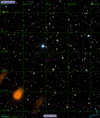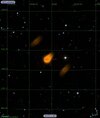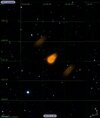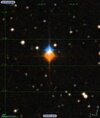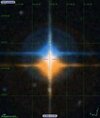pkostov2
The Force is Strong With This One
Existing Infrared Sky Surveys are observing at least two distinct objects, that present itself as brown dwarf stars in our vicinity.
One of them is almost on the ecliptic, on the edge of Orion, gemini and Taurus constellations. The other one is on the opposite side in the Corona Borealis, that is above Libra, constellation.
Unless direct question have been asked we are just assuming there is only two stars in the Solar System.
I would like to ask the Cs : Are there more than two stars in the Solar system?
The attache images are obtained using "Aladin Sky Atlas" - "Aladin is an interactive sky atlas allowing the user to visualize digitized astronomical images or full surveys..."
One of them is almost on the ecliptic, on the edge of Orion, gemini and Taurus constellations. The other one is on the opposite side in the Corona Borealis, that is above Libra, constellation.
Unless direct question have been asked we are just assuming there is only two stars in the Solar System.
I would like to ask the Cs : Are there more than two stars in the Solar system?
The attache images are obtained using "Aladin Sky Atlas" - "Aladin is an interactive sky atlas allowing the user to visualize digitized astronomical images or full surveys..."

